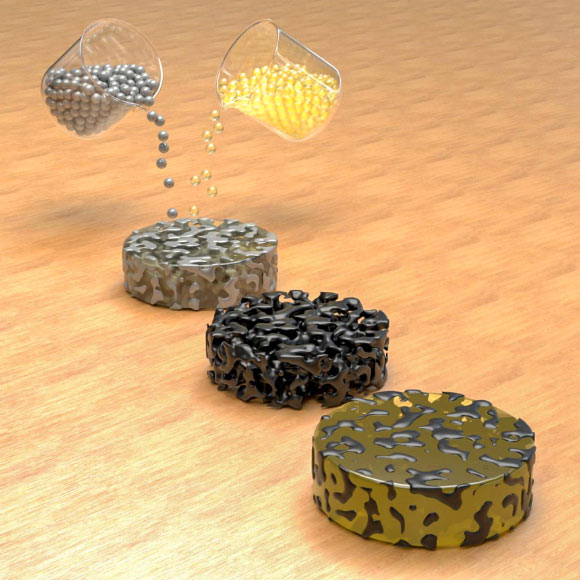
Epoxy is an insulator, and is commonly used in coatings, adhesives, electronics, industrial tooling and structural composites.
Metal or carbon fillers are often added for applications where conductivity is desired, like electromagnetic shielding. But there’s a trade-off: more filler brings better conductivity at the cost of weight and compressive strength, and the composite becomes harder to process.
Rice University’s Dr. James Tour and co-authors replaced metal or carbon powders with a 3D foam made of nanoscale sheets of graphene.
“The graphene foam is a single piece of few-layer graphene. Therefore, in reality, the entire foam is one large molecule,” Dr. Tour said.
“When the epoxy infiltrates the foam and then hardens, any bending in the epoxy in one place will stress the monolith at many other locations due to the embedded graphene scaffolding. This ultimately stiffens the entire structure.”
The puck-shaped composites with 32% foam were marginally denser, but had an electrical conductivity of about 14 Siemens/cm (a measure of conductivity).
The foam did not add significant weight to the compound, but gave it seven times the compressive strength of pure epoxy.
Easy interlocking between the graphene and epoxy helped stabilize the structure of the graphene as well.
“When the epoxy infiltrates the graphene foam and then hardens, the epoxy is captured in micron-sized domains of the graphene foam,” Dr. Tour explained.
The team upped the ante by mixing multi-walled carbon nanotubes into the graphene foam.
The nanotubes acted as reinforcement bars that bonded with the graphene and made the composite 1,732% stiffer than pure epoxy and nearly three times as conductive, at about 41 Siemens/cm, far greater than nearly all of the scaffold-based epoxy composites reported to date.
“The material could initially replace the carbon-composite resins used to pre-impregnate and reinforce fabric used in materials from aerospace structures to tennis rackets,” Dr. Tour said.
The team’s work is published in the journal ACS Nano.
